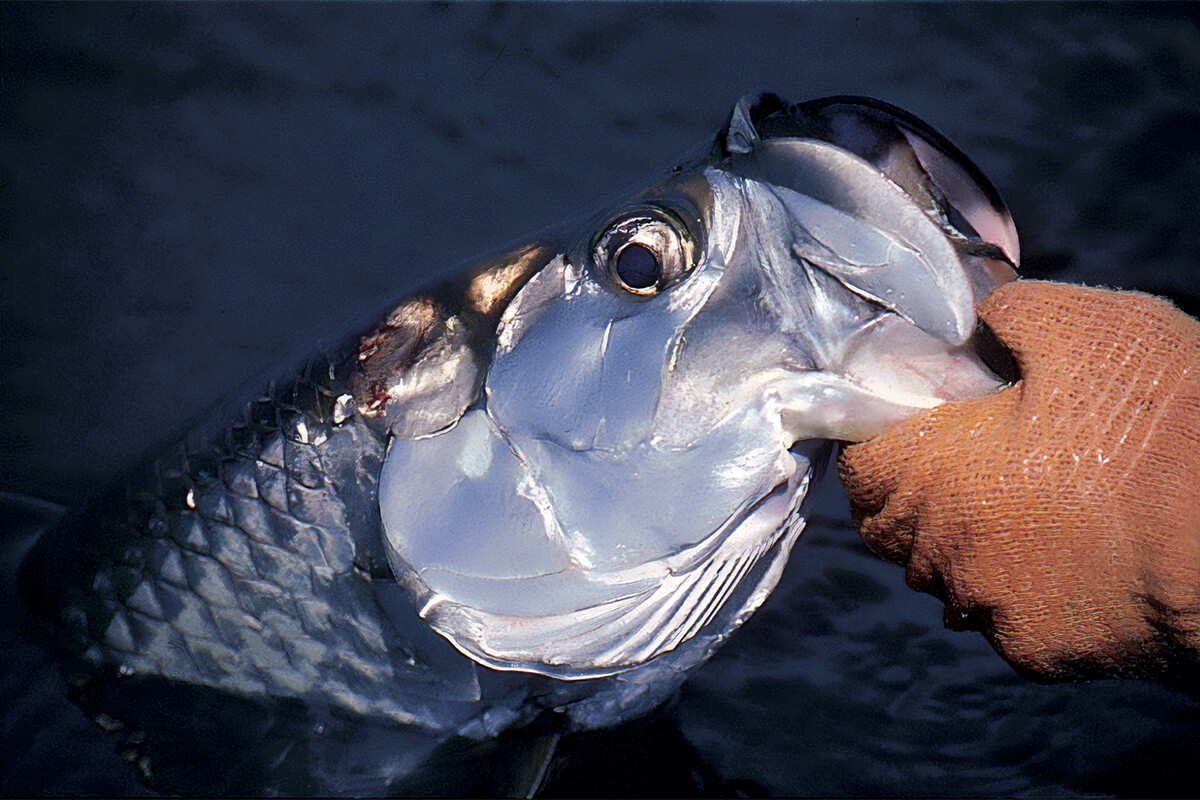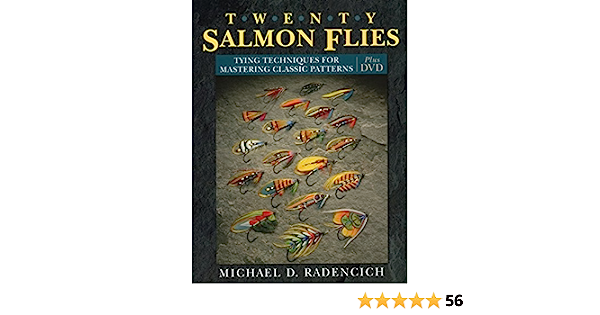Choosing the appropriate fly fishing reel size and weight is crucial. Consider the fish species and line weight for an ideal match.
In addition, the reel should have a sufficient capacity and balance with the fishing rod for optimal performance and ease of use on the water. With these factors in mind, you can choose a fly fishing reel that suits your needs and enhances your fishing experience.

Credit: www.flyfisherman.com
Understanding The Basics Of Fly Fishing Reel Size And Weight
Fly fishing reels come in various sizes and weights, which can be a bit overwhelming for beginners or even experienced anglers. Choosing the right size and weight for your fly fishing reel is crucial as it directly affects the overall performance and balance of your fishing setup.
In this section, we will delve into the components of a fly fishing reel, the importance of selecting the appropriate size and weight, and the key factors to consider when making your decision.
Components Of A Fly Fishing Reel
A fly fishing reel consists of several essential components that work together to ensure smooth operation and efficient line retrieval. Here are some key parts you should be familiar with:
- Spool: This is the part of the reel that holds the fishing line. It can be easily removed or interchanged depending on your specific fishing needs.
- Arbor: The arbor refers to the central shaft of the reel where the fishing line is wound. Larger arbors provide quicker line retrieval rates.
- Drag system: The drag system of a fly fishing reel controls the tension on the line when a fish pulls. It helps prevent line breakage and allows you to tire out the fish gradually.
- Frame: The frame provides structural support to the reel and houses the other components. It should be sturdy and resistant to corrosion.
Understanding these basic components will enable you to make informed decisions when selecting the appropriate size and weight for your fly fishing reel.
Importance Of Choosing The Right Size And Weight
Selecting the correct size and weight of your fly fishing reel is crucial for several reasons:
- Balance: A properly balanced fly fishing setup will ensure comfortable casting and reduced strain on your wrist and arm.
- Line capacity: The size of the reel determines how much fly line and backing it can hold. Choosing the right size ensures that you have enough line for your fishing needs.
- Line retrieval rate: Larger reels with wider spools typically provide faster line retrieval rates, which can be advantageous when fighting larger fish or in situations where quick line pick-up is needed.
- Fly line compatibility: Different reel sizes are designed to accommodate specific line weights. Matching the reel size to the line weight you intend to use ensures optimal performance and efficient casting.
Consider these factors when selecting the size and weight of your fly fishing reel to enhance your overall fishing experience.
Factors To Consider When Selecting Size And Weight
When it comes to choosing the appropriate size and weight of your fly fishing reel, several factors should be taken into account:
- Target species: The size and weight of the fish you plan to target plays a significant role in reel selection. Larger species require reels with more line capacity and stronger drag systems.
- Fishing conditions: Consider the type of water you’ll be fishing and the prevailing weather conditions. In windy conditions or when casting large flies, a heavier reel with a wider spool can be advantageous.
- Casting preference: Your preferred casting style, such as distance casting or delicate presentations, might influence your reel choice. Lighter reels are often favored for delicate presentations, while heavier reels provide additional power for long-distance casting.
- Budget: Your budget will ultimately play a role in reel selection. Reels come in a range of prices, so it’s important to find a balance between your budget and the features you require.
By considering these factors, you can narrow down your options and choose the right size and weight for your fly fishing reel that suits your fishing style, target species, and budget.
Remember, selecting the appropriate size and weight of your fly fishing reel is crucial for a successful and enjoyable fishing experience. Understanding the components of a reel, recognizing the importance of balance and line capacity, and considering various factors will guide you towards choosing the best reel for your specific needs.
Happy fishing!
Matching The Reel Size And Weight To Your Fishing Needs
Fly fishing reels come in various sizes and weights, and finding the appropriate one for your fishing needs is crucial. To make an informed decision, you must consider factors such as the target fish species and fishing conditions, understand the reel size and weight chart, and evaluate line weight and reel capacity.
Assessing The Target Fish Species And Fishing Conditions
Before choosing a fly fishing reel, it’s essential to assess the target fish species and the fishing conditions you’ll encounter. Here are some key points to consider:
- Fish species: Different fish species require reels of varying sizes and weights. Larger fish, such as salmon or steelhead, demand more substantial reels with higher line capacities, whereas smaller species like trout can be effectively tackled with lighter reels.
- Fishing conditions: The fishing environment greatly influences the choice of reel size and weight. If you primarily fish in small rivers or streams, a lightweight reel would be sufficient. However, fishing in larger bodies of water, like lakes or saltwater, may require heavier reels that can handle longer casts and withstand stronger currents.
Understanding The Reel Size And Weight Chart
To determine which reel size and weight are suitable for your needs, it’s crucial to understand the reel size and weight chart provided by manufacturers. Here are some key points to keep in mind:
- Reel size: Manufacturers often assign numerical values or designations to reel sizes. Smaller numbers typically indicate smaller reels designed for lighter lines, while larger numbers signify larger reels suitable for heavier lines.
- Reel weight: Reel weight is measured in ounces or grams and is an important consideration for balance and ease of handling. Lighter reels are advantageous when casting repeatedly or fishing for extended periods, while heavier reels offer more stability and durability.
Evaluating Line Weight And Reel Capacity
By evaluating the line weight and reel capacity, you can ensure that your chosen reel matches the fishing needs. Consider the following points:
- Line weight: The appropriate line weight depends on the target fish species and the fishing conditions. Heavier lines are necessary for larger fish and windy conditions, while lighter lines work well for smaller fish and delicate presentations.
- Reel capacity: Reel capacity refers to the amount of fly line and backing the reel can hold. It’s essential to ensure that the reel has sufficient capacity to accommodate your desired line setup. The reel’s capacity should match the line weight and offer enough space for additional backing if necessary.
Choosing the right reel size and weight is crucial for a successful fly fishing experience. By assessing the target fish species and fishing conditions, understanding the reel size and weight chart, and evaluating line weight and reel capacity, you can make an informed decision that will enhance your angling adventures.
Remember, finding the perfect reel is all about achieving the ideal balance and functionality for your specific fishing needs.
Expert Tips For Selecting The Perfect Fly Fishing Reel Size And Weight
Finding The Right Balance Between Size And Weight
Selecting the appropriate fly fishing reel size and weight is crucial for achieving optimal performance on the water. Finding the right balance between size and weight ensures that you have the necessary control and comfort throughout your fishing experience. Here are some expert tips to help you make the perfect choice:
- Consider the size of your fly rod: The size of your fly rod plays a significant role in determining the appropriate reel size and weight. It is essential to match the reel to the rod for proper balance and casting efficiency. Make sure to check the recommended reel size and weight specifications provided by the rod manufacturer.
- Assess the fish species and environment: Different fish species and fishing environments require specific reel sizes and weights. Larger fish, such as salmon or tarpon, may require a heavier reel with a stronger drag system. Lighter species, like trout or panfish, can be targeted with smaller reels. Similarly, if you plan to fish in saltwater, a corrosion-resistant reel with a larger capacity might be necessary.
- Understand the line weight compatibility: Fly fishing reels are designed to accommodate specific line weights. Matching the reel size and weight to the line weight ensures optimal performance and casting control. Ensure that the reel you choose can handle the line weight you intend to use.
- Consider the drag system: The drag system is an essential component of a fly fishing reel, as it controls the amount of pressure required to release the line smoothly. A heavier drag system may be necessary if you plan to target large, powerful fish that require precise control during their runs.
Considering Different Fishing Styles And Techniques
The fishing style and techniques you prefer to employ also play a significant role in determining the appropriate fly fishing reel size and weight. Here are some key considerations:
- Traditional fly fishing: If you enjoy traditional fly fishing techniques, such as dry fly fishing or nymphing, a lighter reel with a smaller capacity may be suitable. These techniques often require delicate presentations and precision casting, making a lightweight reel more comfortable to handle.
- Spey or two-handed casting: For those who indulge in spey casting or two-handed casting techniques, larger reels with increased line capacity are necessary. These techniques involve longer casts and require a reel capable of holding the longer spey lines.
Seeking Advice From Experienced Anglers And Fishing Guides
When it comes to selecting the perfect fly fishing reel size and weight, seeking advice from experienced anglers and fishing guides can provide valuable insights. Here are some reasons why seeking their advice is beneficial:
- They have practical experience: Experienced anglers and fishing guides have spent countless hours on the water, honing their skills and understanding the nuances of different fishing situations. Their practical experience can help you make a more informed decision when choosing the right reel size and weight.
- They can offer tailored recommendations: Fishing guides, in particular, have extensive knowledge of the local fishing conditions and target species. They can provide tailored recommendations specific to the waters you intend to fish and the fish you aim to catch.
- They are familiar with different reel brands and models: Anglers and guides often have firsthand experience with various reel brands and models. They can provide insights into the performance, durability, and reliability of different reels, helping you narrow down your choices.
By finding the right balance between size and weight, considering different fishing styles and techniques, and seeking advice from experienced anglers and fishing guides, you can select the perfect fly fishing reel size and weight that suits your needs and enhances your fishing experience.
Conclusion
Choosing the appropriate fly fishing reel size and weight is crucial for an enjoyable and successful fishing experience. By considering factors such as the type of fish you are targeting, the fishing technique you prefer, and your personal skill level, you can make an informed decision on the right reel size and weight.
Remember to match the size of the reel to the weight of the fly line you plan to use, as this will ensure optimal performance and casting distance. Pay attention to the reel’s drag system, as it plays a crucial role in controlling and landing fish.
Additionally, consider the material and construction of the reel, as durability and quality are essential for long-term use. By following these guidelines and seeking advice from experienced anglers, you can confidently select the perfect fly fishing reel that suits your needs and enhances your fishing adventures.
Happy fishing!






